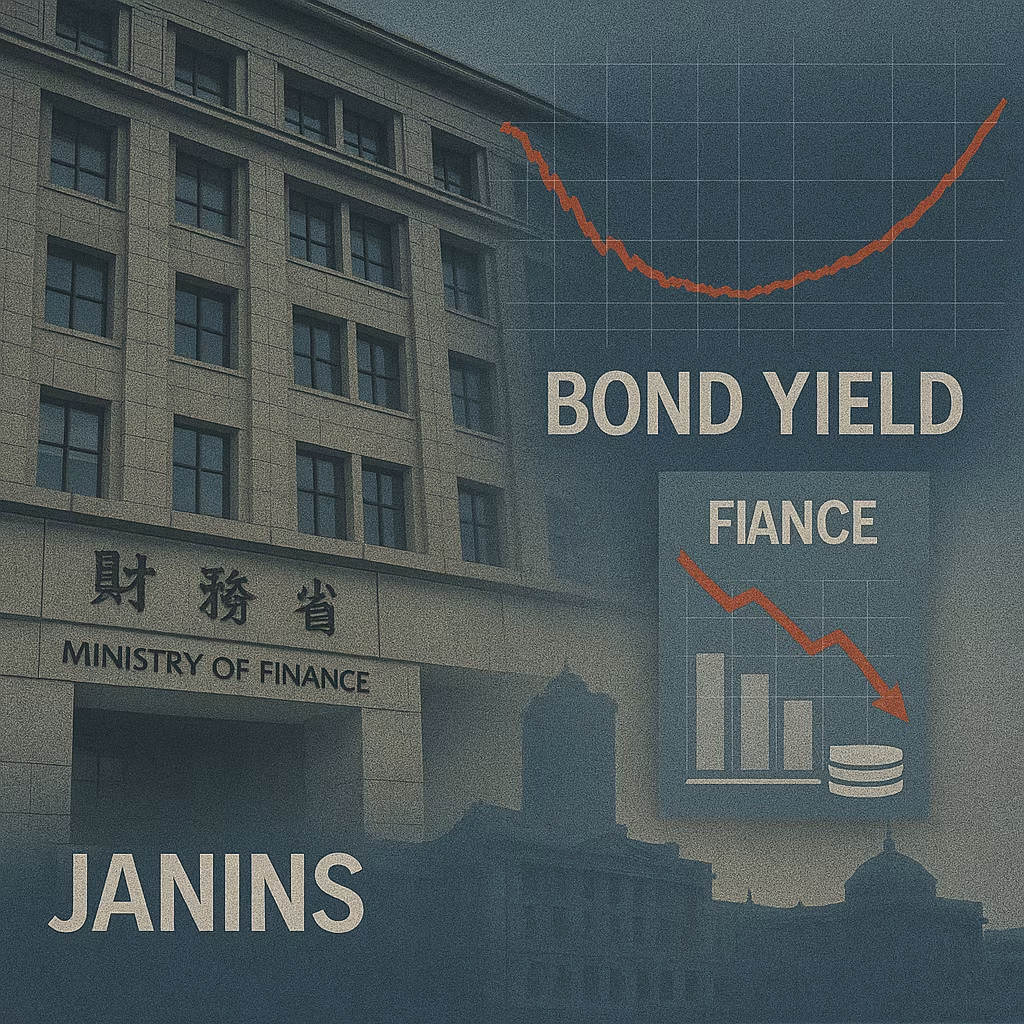Japan’s latest 20-year government bond auction has once again brought attention to the country’s long-standing fiscal vulnerabilities. Despite steady investor demand, the outcome of the sale highlighted concerns about the sustainability of Japan’s enormous public debt and the growing challenges faced by policymakers in balancing market confidence with fiscal responsibility. For a nation that already carries the world’s largest debt burden relative to GDP, the auction results served as both a reassurance of investor appetite and a warning of the risks that continue to shadow its financial future.
The Auction Results and Investor Demand
The Ministry of Finance’s 20-year bond sale attracted solid participation from domestic institutions, including pension funds and life insurers, which typically prefer longer-dated securities. The yield, however, reflected a market increasingly cautious about the trajectory of Japan’s debt profile. While the auction was covered sufficiently, the tail of the bid-to-cover ratio suggested that some investors demanded higher compensation for taking on long-term exposure to Japanese sovereign debt.
This outcome is significant because it demonstrates a delicate balance: investors are still willing to buy Japanese debt, but they remain highly sensitive to fiscal signals and global market trends.
Japan’s Debt Mountain
Japan’s government debt now exceeds 260% of GDP, by far the highest ratio among advanced economies. Decades of fiscal stimulus, combined with structural challenges such as an aging population and sluggish growth, have made debt accumulation a persistent feature of the Japanese economy.
While the Bank of Japan (BOJ) has absorbed much of this debt through its massive bond-buying program, the central bank’s gradual shift away from ultra-loose monetary policy has put renewed focus on the government’s fiscal position. Any reduction in BOJ support raises the risk that markets will demand higher yields, making it more costly for the government to service its obligations.
Fiscal Policy Pressures
The Japanese government continues to walk a tightrope between supporting economic recovery and restoring fiscal discipline. Recent fiscal packages, aimed at cushioning households and businesses from rising prices and global headwinds, have added to borrowing needs. Meanwhile, political pressure to expand defense spending and invest in energy security has created new fiscal obligations.
The 20-year bond auction outcome reflects these competing priorities: investors are willing to finance government spending, but the underlying concern remains whether Japan has a credible plan to stabilize its debt trajectory in the medium term.
The Role of the Bank of Japan
The BOJ’s policies play a crucial role in shaping bond market dynamics. Under its yield curve control framework, the central bank has kept long-term yields capped, ensuring that government borrowing costs remain low. However, with inflation hovering above the BOJ’s long-term target and wage pressures rising, there is speculation that the central bank will continue to gradually adjust its stance.
If the BOJ allows yields to rise further, investors may demand higher returns in future auctions, creating a feedback loop that increases fiscal pressures. This uncertainty loomed over the 20-year bond auction, as participants weighed the possibility of policy normalization against the government’s ongoing financing needs.
Global Market Context
Japan’s fiscal concerns are not unfolding in isolation. Global bond markets have experienced significant volatility as major central banks adjust interest rates to combat inflation. Higher U.S. Treasury yields, in particular, tend to spill over into Japanese markets, influencing investor expectations.
Foreign investors, while less dominant in long-term Japanese debt compared to shorter maturities, also play a role in shaping demand dynamics. Any shift in global risk appetite could affect participation in Japanese bond auctions, adding another layer of uncertainty to fiscal management.
Structural Economic Challenges
Beyond immediate fiscal pressures, Japan’s long-term structural challenges add weight to the concerns reflected in the 20-year bond auction. A shrinking and aging population reduces the tax base, making it harder to generate the revenues needed to service debt. At the same time, social security and healthcare costs continue to rise, creating a vicious cycle of higher spending and greater borrowing.
Policymakers are attempting to address these issues through productivity-enhancing reforms, labor market adjustments, and policies to encourage innovation. However, progress has been slow, and fiscal vulnerabilities remain deeply entrenched.
Market Confidence and the Road Ahead
For now, investor confidence in Japanese government bonds remains resilient, largely due to the country’s strong institutional framework, large domestic savings base, and the BOJ’s presence in the market. Yet the 20-year bond auction underscores that this confidence cannot be taken for granted.
Market participants are increasingly focused on whether Japan can outline a credible medium-term fiscal strategy. Without such a roadmap, concerns about debt sustainability could intensify, potentially leading to higher borrowing costs and increased strain on the public purse.
Conclusion: A Delicate Balancing Act
Japan’s latest 20-year bond auction illustrates the fine line that policymakers must walk. Investor demand is holding up, but yields are showing the sensitivity of markets to fiscal and monetary signals. As Japan navigates a future of rising spending pressures, shifting central bank policy, and structural demographic headwinds, the question of debt sustainability will remain at the forefront.
The auction serves as a timely reminder that while Japan has long managed to defy conventional debt concerns, the underlying risks remain—and will continue to test both market confidence and government resolve in the years ahead.





